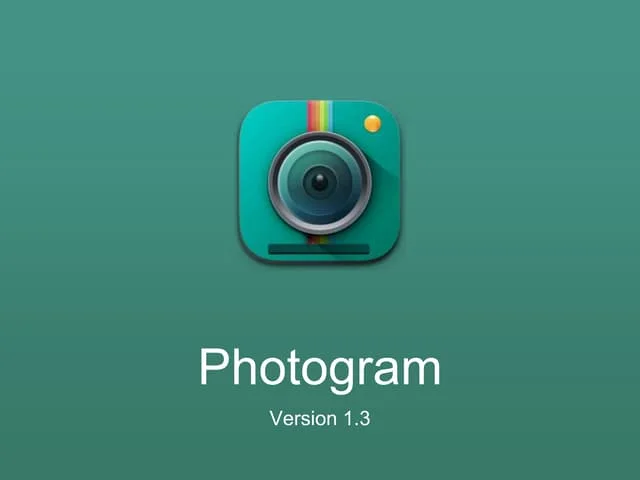In 2025, the world is awash with images selfies, sunsets, protests, and quiet moments all vying for attention. At the heart of this visual storm stands Photogram, a platform that has transcended its roots as a photo-editing tool to become a cultural cornerstone. With 2.1 billion monthly users, Photogram isn’t just an app ; it’s a global diary, a protest tool, and a creative playground. Here’s how it evolved from a humble startup to a titan navigating AI, privacy wars, and the relentless pace of Gen Z’s whims.
From Filters to Phenomenon: The Photogram Journey
Launched in 2015 as a solution for grainy smartphone photos, Photogram defied critics who dismissed it as “just another filter app.” Its founders prioritized human connection over algorithmic gimmicks, with the “clarity” filter transforming murky snapshots into vivid memories. By 2018, the app introduced “Stories” 24-hour visual diaries that eclipsed Snapchat’s ephemeral format. Users didn’t just share moments; they curated micro-narratives.
The AR revolution of 2021 cemented Photogram’s dominance. Filters allowed users to step into Van Gogh’s “Starry Night”, duel as anime warriors, or project dinosaurs into backyards. Teens in Jakarta staged fantasy battles, while grandparents in Buenos Aires turned family photos into Renaissance art. Daily active users surged past 500 million, proving Photogram’s inescapable cultural footprint.
The Monetization Machine: Turning Pixels into Profit
Photogram’s financial success hinges on three pillars, each redefining the creator economy:
1. Hyper-Targeted Ads
Algorithms mine niche communities like #RetroGamers and #UrbanGardening. A photo of sourdough bread triggers ads for artisanal flour a strategy that earned $28 billion in 2024.
2. Subscriptions with Substance
Photogram+ offers cloud storage for 10,000 photos and exclusive tools like “Neon Noir,” transforming cityscapes into cyberpunk vistas. Tokyo-based influencer Lila Chen describes it as “a studio in your pocket.”
3. Creator Economy 2.0
The “Creator Collective” lets users monetize shoppable tags. A latte art photo links to the mug’s purchase page, with creators earning 80% of sales. Last year, this paid out $2.4 billion to users.
Beyond ads and subscriptions, Photogram’s digital real estate thrives. Trending hashtags like #WanderlustWednesday and branded AR filters (e.g., Nike’s virtual sneaker try-ons) position the platform as the internet’s billboard.

Survival Mode: Scandal, AI, and the Gen Z Exodus
Photogram’s 2024 data breach exposed private photos weddings, protests, and intimate moments—shattering trust. Madrid-based photographer Marisol Gómez recalls feeling “violated.” The platform responded with Vault Mode, a premium feature storing images in blockchain-secured “safes.” Free users received basic encryption, but critics labeled it a “privacy paywall.” CFO Raj Patel countered: “Security requires investment. Even banks charge for vaults.”
Competition intensified with Mirage AI, a startup generating photorealistic images from text prompts. Nairobi-based artist Jomo Kariuki questioned, “Is this the end of real photography?” Photogram’s rebuttal, “Imagination Engine”, allows text-based photo edits (“make this picnic eerie”) while crediting human creators. CEO Elena Torres emphasized collaboration: “AI enhances, but humanity inspires.
Meanwhile, TikTok’s Gen Z dominance loomed. Photogram’s initial “ReelCraft” launch flopped, mocked online as “a dad dancing at prom.” A redesign emphasizing “hybrid storytelling” pairing 10-second clips with iconic photos resonated. A skateboard fail video juxtaposed with a championship win became a viral template for raw, relatable narratives.
Sustainability: Progress or Greenwashing?
Photogram’s 2030 carbon-neutral pledge faces scrutiny. While its “Eco-Frame” initiative plants a tree for every #WildlifeWarrior nature post, critics highlight “Vault Mode”s energy-intensive blockchain. Climate activist Zara Nguyen argues, “They’re swapping one crisis for another.”
The platform’s solar-powered data centers in Morocco and Kenya reduced energy use by 40%, yet skeptics demand faster action. Sustainability lead Amina Diallo admits, “We’re learning as we go,” underscoring the complexity of balancing innovation with environmental responsibility.
The Human Algorithm: Why Photogram Endures
Photogram’s secret isn’t technology—it’s nostalgia. Features like “Throwback Thursdays” resurface forgotten moments, transforming awkward 2016 selfies into cherished relics. Its true power, however, lies in community. During Poland’s 2023 protests, the “Solidarity Filter” overlaying symbols of the Warsaw Uprising went viral. In Kenya, #WildlifeWarrior funded lion conservation. Photogram isn’t just capturing moments; it’s fueling movements.
The Road Ahead: Relevance in a Shifting Landscape
Privacy vs. Profit: Can free users tolerate ads if premium security costs extra?
AI’s Double-Edged Sword: Will “Imagination Engine” satisfy artists and amateurs?
Gen Z’s Loyalty: Can “ReelCraft” rival TikTok’s cultural grip?
Photogram’s greatest asset remains emotional equity. For billions, it’s the digital scrapbook of first steps, breakups, and breakthroughs. User Diego Martinez reflects, “No AI can replicate finding your mom’s 2017 birthday post.”
Final Exposure
Photogram’s story is a paradox: a data-driven empire built on human moments, a tech giant that still feels personal. In 2025, it challenges us to rethink what a photo means: not just as pixels, but as legacies.
As the sun sets on another day of 8 billion uploads, Photogram whispers: “Your life isn’t just a click. It’s a story.”









